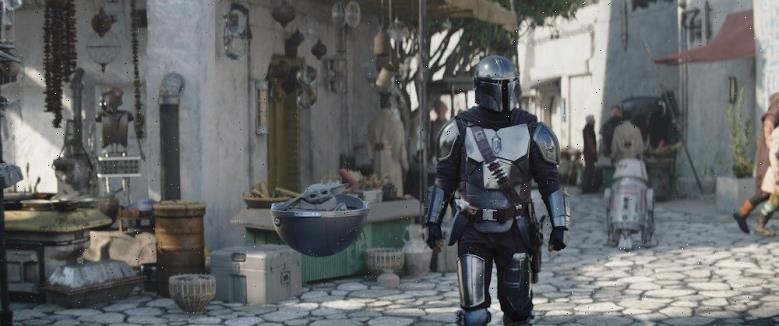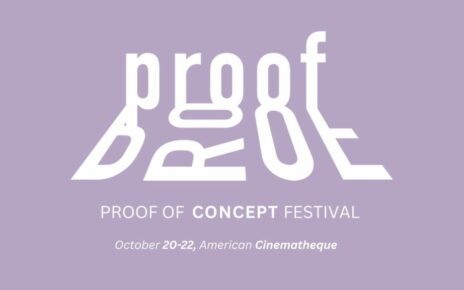

Season 3 of Disney+’s “The Mandalorian” is a turning point in many ways, with a reunited Din Djarin/Mando (Pedro Pascal) and Grugu (Baby Yoda) potentially taking on greater responsibility to protect the scattered and divided Mandalorians. According to the series creator Jon Favreau, these higher stakes called for a larger visual scale, pushing production further beyond the limits of ILM’s innovative virtual production tool: the StageCraft Volume.
More than anyone in Hollywood, Favreau was responsible for the earlier-than-expected adoption of on-set virtual production when he made the bold choice to use StageCraft, or The Volume, as the principal mode of production for Season 1. While the Volume has dramatically improved and expanded its capabilities since Season 1, Favreau acknowledged the need to be more strategic about when and how to use it.
“The Volume is a very specific tool that is very useful in certain cases,” Favreau told IndieWire. “You can have a lot of interactive light on the set, so the photorealism and the types of environments that we could create are getting better.”
A key benefit here, compared to traditional green or blue screen screen, is that the large, curved LED walls not only serve as the backdrop but also a light source. As the virtual environments change (for example, hyper-speed or characters moving through a location or set), so too does the light on real-life subjects on the stage in front of The Volume. In addition, the StageCraft setup allows the camera moves dynamically through The Volume in correct parallax. Conversely, one of the current limitations of The Volume is it can only simulate “soft” or even sources of light and environments. This is one of the reasons the overcast, silvery winter exteriors and darker interiors of “The Mandalorian” Seasons 1 and 2 were an ideal fit to pioneer the new technology. Yet, as Season 3 pushed the storyline to non-Volume friendly lighting environments, Favreau and team needed to do more traditional location and set-based shooting.


“The Mandalorian”
Lucasfilm Ltd.
“It becomes difficult because sunlight has such a specific aesthetic,” Favreau said. “The hard daylight is best done in hard daylight, but there are certain swaths of time, like magic hour or indirect sunlight or overcast, where we could do a lot of stuff like that.”
When it came to handling the devastated expanse of Din’s home planet, Mandalore, it wasn’t practical to rely solely on The Volume. Instead, the team leaned heavily into set building. First depicted in the animated “Clone Wars” series, the desert planet with bio-domed cities was re-imagined by the art department, led by production designers Doug Chiang (also Lucasfilm’s executive creative director) and Andrew Jones, who built the physical sets.
“We have Mandalore that we go to, and that doesn’t fit on The Volume stage, so we’re letting the story dictate what we do,” said Favreau, who pointed to increased use of The Volume on other projects as an impetus to develop new techniques for it while combining its use with set design, green screen, and location shooting. “It’s knowing what environments to do photogrammetry of, how to build the set so that the boundaries disappear and mixing it up from shot to shot, so you’re not always using the same technique. And then we have the geniuses at ILM and the other vendors that we work with figure out how to capture all of that in the time frame and the budget that we have.”


“The Mandalorian”
Lucasfilm Ltd.
Dave Filoni, the Lucasfilm executive producer who served as supervising director of “The Clone Wars,” added that it’s been thrilling to explore more of Mandalore in Season 3. “There was a fusion of the old and the new for live-action,” he told IndieWire. “But we never went inside the domes, really [on ‘The Clone Wars’]. We couldn’t build that expansively on that show. So we had a large amount of time where we could say, ‘Well, what does this look like now?’”
Still, even when it came to Mandalore, there was plenty of use for The Volume. In Episode 2, the disgraced Din returns to his home planet in search of redemption by performing the ritual of bathing in the “living waters” beneath the city’s old mines. The 42-minute episode was directed by Oscar-nominated cinematographer Rachel Morrison, who makes her feature directorial debut this year with the boxing biopic “Flint Strong.” I really liked how visual the episode was, there was less dialogue, and I enjoyed The Volume. It’s so much better than blue or green screen,” she told IndieWire.
Source: Read Full Article

